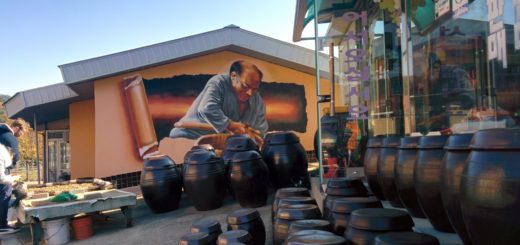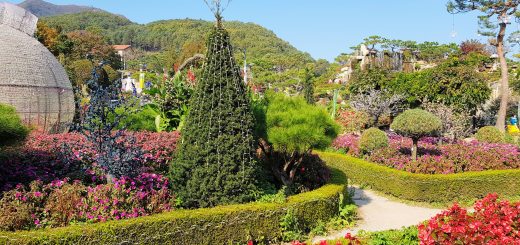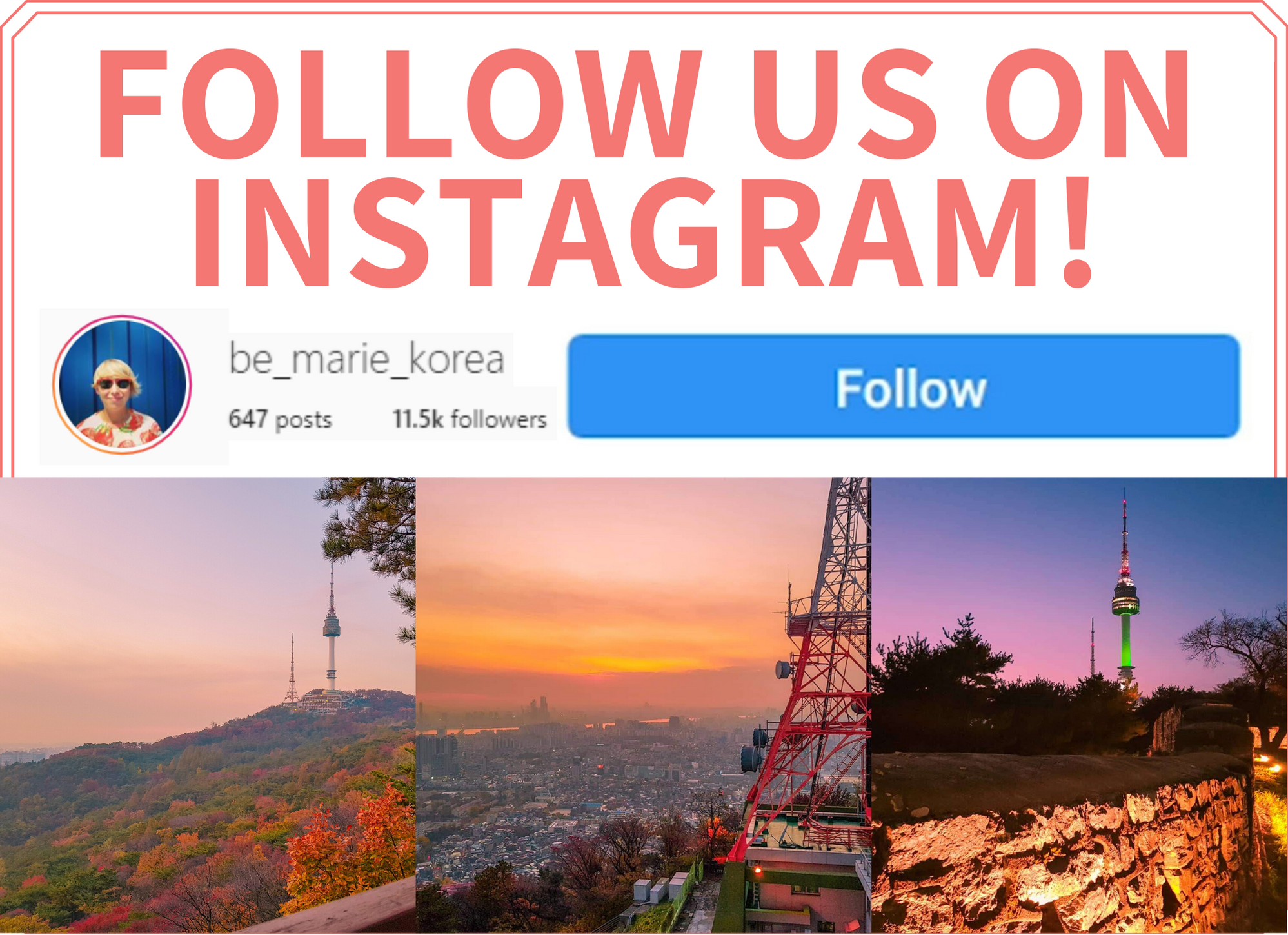The Best DMZ Tour In South Korea | A Full Guide To The DMZ
The Demilitarized Zone (DMZ), a strip of land running across the Korean Peninsula that serves as a buffer zone between North and South Korea, is a popular attraction among tourists visiting South Korea. This zone, known for its historical significance and unique biodiversity, extends all the way from the west coast of Incheon to the eastern mountain range of Gangwon-do, covering a total distance of 250 kilometers.
This article presents a comprehensive guide to exploring the DMZ, detailing the must-see sights, the best tour options available, and many other valuable tips to enhance your travel experience.
Places To Visit
The most renowned DMZ sights are located in Paju, a city bordering North Korea. These include the Third Infiltration Tunnel, the Dorasan Observatory, and the Dora Station. The Third Infiltration Tunnel, discovered in 1978, offers a firsthand experience of the tense relationship between the two Koreas. The Dorasan Observatory, on the other hand, allows visitors a rare glimpse of North Korean lands. The Dora Station, once a bustling railway station connecting the two Koreas, stands today as a symbol of hope for reunification.
However, a trip to the DMZ isn’t confined to the city of Paju, but boasts of notable sights beyond this city. Across the length of the DMZ, one can discover various sites illuminating the historical and natural richness of the Korean Peninsula, like Incheon’s Ganghwa Peace Observatory or Gangwon-do’s Cheorwon area.
DMZ Tours in Korea
A tour is undoubtedly the best way for travelers to take in the sights of the DMZ. Not only do these tours provide knowledgeable guides who can offer historical context, but they also handle logistical considerations making the experience hassle-free. According to travelers’ reviews and experience, Company X offers one of the most comprehensive and informative tours.
Travel Tips
For an enhanced and informed experience, it’s best to:
- Book your tour in advance, considering the demand.
- Dress appropriately for weather conditions as some parts of the tour take place outdoors.
- Follow all safety rules and guidelines provided by the tour operators.
In conclusion, this full guide aims to ensure that tourists visiting the DMZ not only explore the popular spots but also discover the less-known areas for a truly enriching experience.

Contents
The DMZ: A Vital Peace-Preserving Buffer
Standing as a stark symbol of division, the DMZ (Demilitarized Zone) functions as a crucial conflict-deterrence zone between the two Koreas – North and South. Stretching the width of the Korean peninsula – approximately 250 kilometers long – and possessing a mean width of 4 kilometres, the DMZ effectively bisects the peninsula into two distinct geopolitical entities. Although it’s a patch of unrest, this stretch of land acts as a buffer safeguarding both nations from any chances of inadvertent military escalations.
The genesis of the DMZ dates back to 1953, following the Korean War, encapsulating over six decades of fraught standoff. Imposed by the Korean Armistice Agreement, it’s not just a simple borderline but a de facto 2.5 miles of weapon-free buffer zone enveloping the actual military demarcation line. Despite its unsettling connotations, ironically, this area has transformed into an inadvertent animal sanctuary nurturing a rich ecosystem due to human absence, earning it the nickname – “Accidental Paradise.“
Inside the liminal DMZ is a neutral ground known as the Joint Security Area (JSA). In this conciliatory space, leaders from North and South Korea occasionally meet for negotiation talks, echoing the constant quest for diplomatic solutions between the two nations.
- Formation Date: 27th July 1953
- Location: Korean Peninsula
- Length: Approximately 250 kilometers
- Width: Roughly 4 kilometers
- Purpose: To serve as a buffer zone preventing accidental warfare and armed confrontations
- Notable Area: Joint Security Area (JSA), a neutral ground for inter-Korean meetings
- Ecological Significance: Due to human absence, the DMZ has unknowingly evolved into a safe refuge for diverse wildlife, dubbed as the “Accidental Paradise.”
Overall, the DMZ’s existence underscores the complex history of the Korean peninsula and stands as a testament to escalating tensions and potential reconciliation between North and South Korea.
DMZ Places To Visit In Gangwon-do
The DMZ, or Demilitarized Zone, is a roughly 250 kilometers long area that extends through the provinces of Gyeonggi-do and Gangwon-do. The region hosts a unique mixture of historical sites related to the tumultuous history of the Korean peninsula and extraordinary natural beauty.
While Paju in Gyeonggi-do province offers some renowned DMZ experiences, this guide focuses on the numerous intriguing spots to visit in Gangwon-do province. These sites can primarily be reached by car or public transport as guided tours to this area are sparse.
Please be cognizant that most places in this list are located within security zones and require advanced reservations. Ensure to visit their respective websites to make your trip as smooth as possible.
1. Cheorwon
Situated on the border of Gyeonggi-do Province and North Korea, Cheorwon county is a historical site rich in memories of the Korean War. Here are some notable attractions in this area:
1.1 Labor Party Headquarters
Constructed in 1946, this Soviet-style building was utilized by the North Korean Labor Party until the outbreak of the Korean War. The building was constructed by forced laborers, and many of the individuals who were brought here were usually tortured and never left alive.
Address: 265, Geumgangsan-ro, Cheorwon-gun, Gangwon-do
1.2 Memorial Tower of the Baeckma Goji Battle
This memorial pays tribute to the soldiers who lost their lives in the Baeckma Goji Battle, also known as the Battle of White Horse. This battle was one of the bloodiest of the Korean War.
Address: 72, Daema 1-gil, Cheorwon-gun, Gangwon-do
1.3 Dopiansa Temple
Originally built in 865 AD, this temple houses National Treasures Nr. 63 and Nr. 223. It has been destroyed and subsequently reconstructed twice.
Address: 450 Gwanu-ri, Dongsong-eup, Cheorwon-gun, Gangwon-do
2. Hwacheon
Hwacheon is well-known for its annual Hwacheon Sancheoneo Ice Fishing Festival. The county also offers DMZ sites along with the tomato festival and beautiful natural landscapes.
2.1 Pyeonghwaui Peace Dam
Built to prevent potential flooding attacks from North Korea, it now serves as a popular tourist destination.
2.2 World Peace Bell Park
Located near the Peace Dam, this park provides an emblematic embodiment of hope and peace.
Address: 2918 Dongchon-ri Hwacheon-eup Hwacheon-gun Gangwon-do
3. Yanggu
At the geographical heart of the Korean peninsula, Yanggu County experienced numerous battles during the Korean War.
3.1 The 4th Infiltration Tunnel
Discovered on March 3rd, 1990, this tunnel is one of the few infiltration tunnels in Korea that tourists can visit.
Address: 233-4, Ihyeon-ri, Haean-myeon, Yanggu-gun, Gangwon-do
3.2 Eco-Botanical Garden
An educational facility, here visitors can learn about the diverse flora and fauna living in the DMZ.
Address: 266-60, Punch bowl-ro, Dong-myeon, Yanggu-gun, Gangwon-do
3.3 Park Soo Keun Museum
Park Soo Keun, a celebrated Korean painter, grew up in the Yanggu County area.
Address: 265-15 Parksookeun-ro, Yanggu-eup, Yanggu-gun, Gangwon Province
4. Goseong
Goseong county, the northernmost point of South Korea, hosts historical landmarks linked to both South and North Korea.
4.1 Unification Observatory
This observatory offers a stunning view of Haegeumgang River and Geumgangsan Mountain (North Korea).
Address: 188, Machajin-ri, Hyeonnae-myeon, Goseong-gun, Gangwon-do
4.2 Villa of Kim Il-Sung
Once the summer home of Kim Il-Sung, North Korea’s inaugural leader, this villa is open to visitors.
Address: 300-1, Hwajinpo-gil, Goseong-gun, Gangwon-do
4.3 Villa of Rhee Syngman
Built for Rhee Syngman, South Korea’s first president, this villa stands close to the villa of former North Korean leader Kim Il-Sung.
Address: 33, Iseungmanbyeoljang-gil, Goseong-gun, Gangwon-do
Did you find this article informative about what to visit in the DMZ, and the process of planning a DMZ tour in Korea? If you have any queries or concerns regarding how to go about scheduling a visit to the DMZ, feel free to voice them in the comment section below.
Frequently Asked Questions
What can visitors expect to see on a DMZ tour in South Korea?
Visitors on a DMZ tour can expect to see several key sites, including the Joint Security Area (JSA), the Third Infiltration Tunnel, and the Dora Observatory. These locations offer a unique glimpse into the history and ongoing tension between North and South Korea, as well as views across the border into North Korean territory.
Are there any restrictions or requirements for joining a DMZ tour?
Yes, there are specific requirements and restrictions for joining a DMZ tour. Visitors typically need to book tours through authorized tour companies, bring a valid passport for identification, and adhere to a strict dress code. Certain nationalities may have additional restrictions, and it’s crucial to check in advance.
How long does a typical DMZ tour last, and what is the best time to visit?
A typical DMZ tour lasts around half a day to a full day, depending on the tour package chosen. The best time to visit is during the spring or fall when the weather is mild, allowing for a more comfortable experience while exploring outdoor sites.






I haven’t been to the DMZ, but it’s on my list of places to visit.